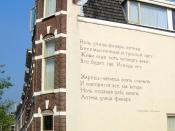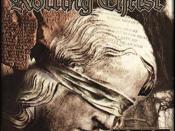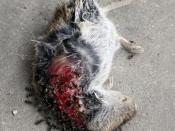"Leningrad Cemetery, Winter of 1941" takes the reader into the "Leningrad Cemetery" to see the "icy winter" with its "dead" that "could not be buried." Sharon Olds paints dramatic pictures, using powerful imagery that forces the reader to see the despair of having to use "coffin wood for fuel." The poem shows the reader the "dead," the casualties of the "siege," and the reckless loss of human life. Olds delivers her images with words deftly chosen, striking at the reader's mind, causing it to wonder at the necessity of wanton waste of lives. The figurative language used in the poem is very dramatic but the last few lines of the poem bestow the images with emotions. The "hand" reaches for life, wanting vitality and life so desperately, that it is willing to come alive again, even in the dismal "winter of 1941."
The title and the first three lines of the poem establish the setting of the poem very clearly and unemotionally.
The "dead could not be buried" because the "ground was frozen," and even the "gravediggers" closer to death than they should've been, being "weak from hunger." Olds immediately plunges the reader into a desolate world, where even the "dead" cannot be properly laid to rest. Hunger prevails, and "coffin wood is used for fuel."
The third line continues, the poem begins to shift, describing the "dead." The "dead" are specifically introduced in the middle of line 3 and the voice continues its train of thought, thinking aloud and continuing into the next line. This enjambment accelerates the poem. The voice trips over into the next line, speeding over the lack of "coffin wood" the "dead" should respectfully have, the cold and hungry, guilty of stealing "coffin wood" from the "dead" in times of scarcity. The previous...


